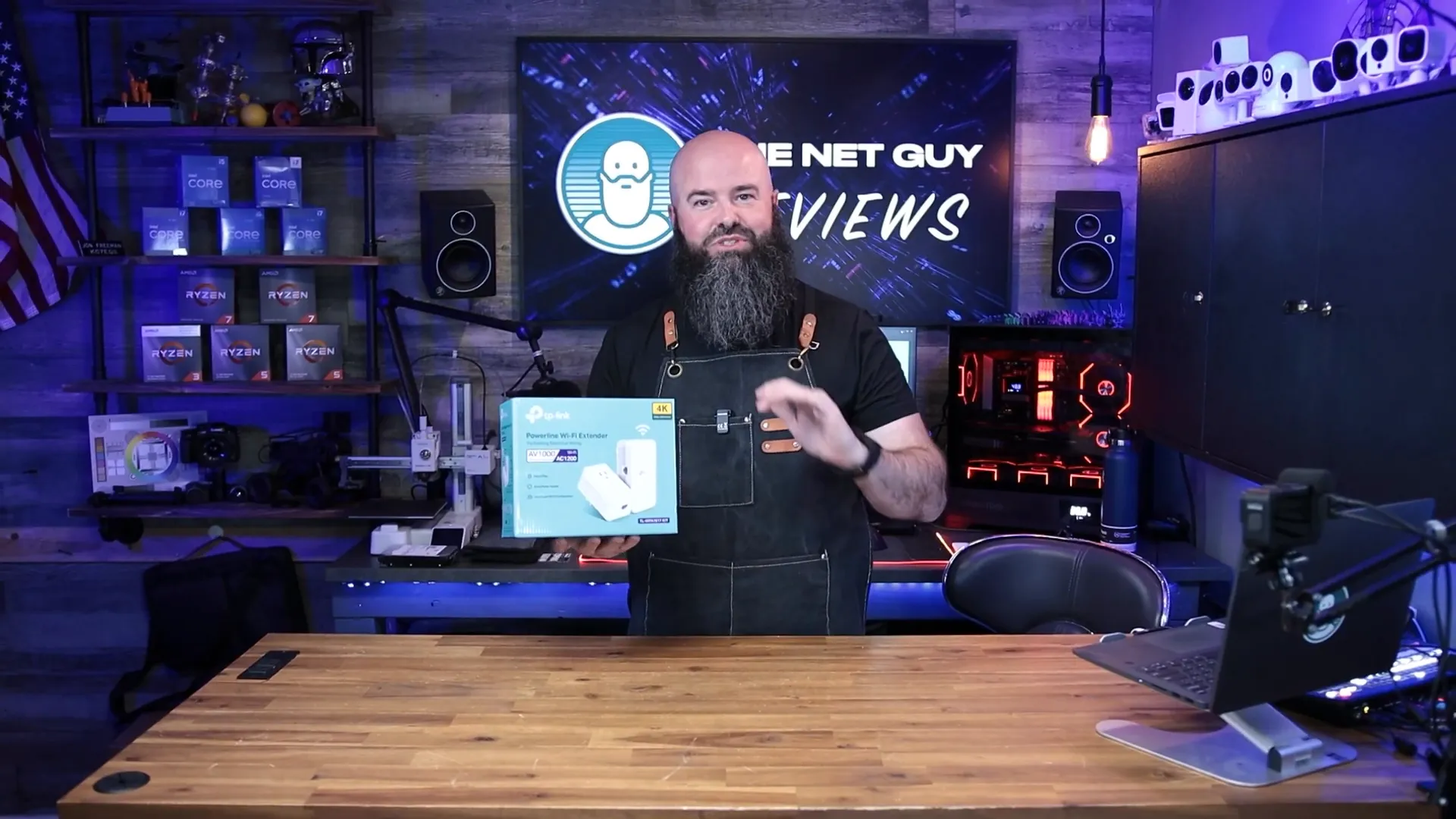Welcome to my deep dive into the TP-Link Powerline AV1000 Wireless Extender! In today’s blog, we’ll explore whether this device lives up to its bold promise of providing up to 1,000 Mbps transfer rates. Perfect for homes and apartments, this device aims to make your internet experience more seamless without the hassle of running cables. Let’s see if it delivers on its claims!
Considering this item? Using my Amazon affiliate link here earns me a small commission. Thanks!
What is the TP-Link Powerline AV1000?
The TP-Link Powerline AV1000 is not just an access point; it’s designed to extend your Wi-Fi using existing home wiring. This means you won’t have to worry about drilling holes or running cables, especially useful for those living in apartments. All you need to do is plug it into standard outlets, and you’re good to go.

The device claims to deliver impressive speeds—1,000 Mbps over your power line connection and 1,200 Mbps over AC Wi-Fi. It also features a plug-and-play extra power socket and one-touch Wi-Fi configuration, along with support for 4K HD streaming. In a world where streaming has become a staple, can it really meet the demands?
Setting Up the TP-Link Powerline AV1000
Setting up the device is straightforward. You’ll need to place one unit next to your router and the other unit in the area where you need Wi-Fi. This setup allows for a backhaul connection over your existing power lines. With a maximum distance of 300 meters over your wiring, it’s designed to cover various room setups.

One of the units connects to your router, while the other acts as a Wi-Fi access point. Each unit has LED indicators to show whether they are powered on and connected to the network. In terms of ease of use, it’s hard to beat the plug-and-play nature of this device.
Performance Testing
Now, let’s get down to the nitty-gritty: performance. After connecting the device, I ran a speed test to see how it stacks up against my regular wired connection. To give you some context, I typically have a symmetrical gigabit connection (1 Gbps up and down), and I usually see speeds between 850 and 900 Mbps.

When I tested the Powerline connection, I achieved a maximum speed of 264 Mbps. While this is decent, it falls short of the gigabit speeds advertised. I then unplugged the unit and connected directly to the router to run the same test. This resulted in speeds of around 2.35 Gbps, highlighting that the Powerline unit isn’t quite hitting its claimed performance levels.
Wi-Fi Access Point Functionality
One of the standout features of the TP-Link Powerline AV1000 is that it doubles as a Wi-Fi access point. This means you can extend your existing network and configure settings through the TP-Link Tether app. The app allows for client management, enabling you to block users if needed and monitor your network’s performance.

When I connected to the 5 GHz band, I recorded speeds of around 250 Mbps, which is quite reasonable. However, switching to the 2.4 GHz band resulted in a significant drop to about 60 Mbps. This demonstrates that while the 5 GHz band offers better performance, the 2.4 GHz band remains limited.
Comparison with Wi-Fi 6 Systems
How does the TP-Link Powerline AV1000 compare with newer Wi-Fi 6 systems? I tested it against my TP-Link mesh system, the X20. The results were telling: I achieved speeds over 700 Mbps with the Wi-Fi 6 system, showcasing the advantages of newer technology.

While the Powerline AV1000 has its merits, especially in situations where running cables is impractical, it does not outperform a traditional Wi-Fi 6 system. If you’re looking for maximum performance and plan to stream in high definition, investing in a mesh system might be the better route.
Who Should Consider the TP-Link Powerline AV1000?
The TP-Link Powerline AV1000 is ideal for those living in apartments or homes where running cables isn’t feasible. If you’re in a situation where you need to extend your Wi-Fi coverage without the mess of physical cables, this device could be your solution. It’s particularly useful if you’re on the same electrical circuit, as that optimizes the connection.
However, for users who prioritize speed and are willing to run cables, a wired backhaul or a traditional mesh system may be more effective.
Final Thoughts
The TP-Link Powerline AV1000 Wireless Extender certainly has its place in the world of home networking. While it may not hit the gigabit speeds it advertises, it does provide a reliable option for extending your Wi-Fi without the hassle of installation. If you’re in a pinch and need a quick solution, this device could work well for you.
Considering this item? Using my Amazon affiliate link here earns me a small commission. Thanks!
Subscribe for More Reviews!
If you enjoyed this review and want to stay updated on more tech products, don’t forget to subscribe to my YouTube channel at The Net Guy Reviews. I appreciate your support!
